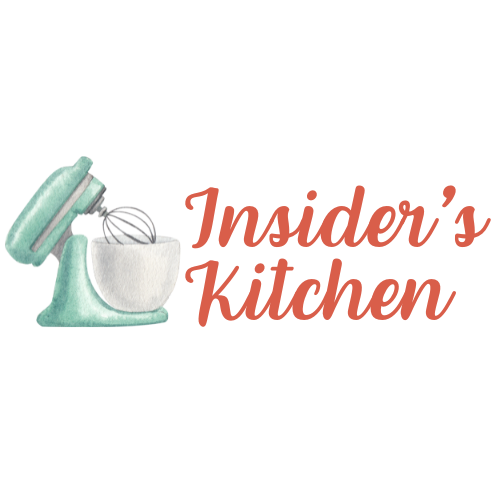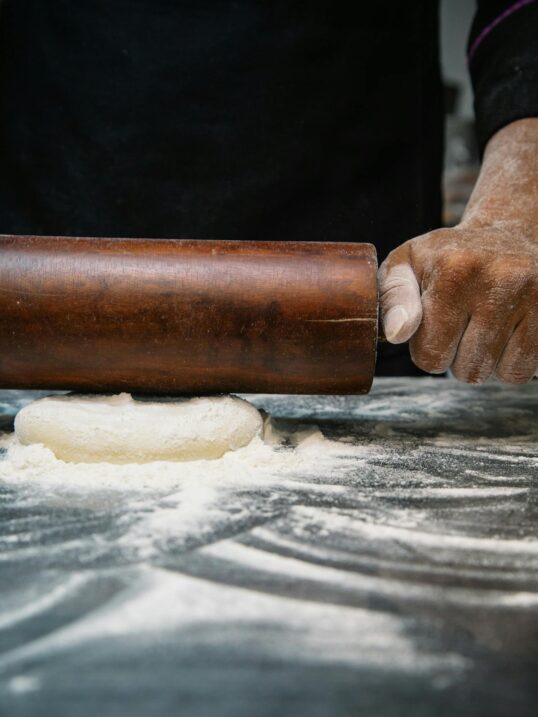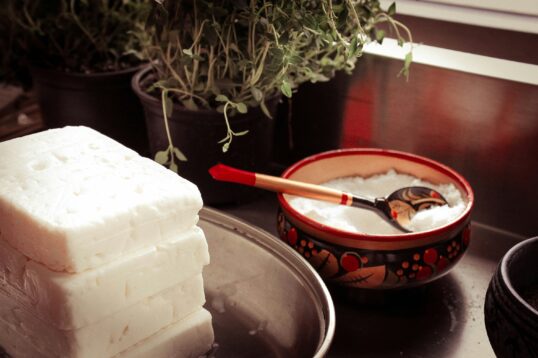When it comes to versatile cookware, the Dutch oven is a household name—but have you heard of a braiser? While less familiar, a braiser is just as valuable in the kitchen, offering its unique strengths to elevate your cooking game.
The Dutch oven is our go-to for hearty soups, stews, and comforting one-pot meals. Meanwhile, the braiser excels at shallow frying, searing, sautéing, and slow simmering, making it a must-have for certain recipes.
In this guide, we’ll break down the key differences and surprising similarities between these two cookware staples. Plus, we’ll share our top picks for the best Dutch ovens and braisers to help you make the perfect choice for your kitchen.
What Is a Braiser?
A braiser is a heavy-bottomed cookware, usually made of cast iron, with a wide base and sloping, shallow walls.
Unlike traditional cast iron cookware, most braisers are enameled, which preempts the need to season the cast iron. Enameling cast iron cookware makes it relatively non-stick and allows you to cook acidic foods, such as tomato or wine-based dishes.
Most braisers come with a tight-fitting lid, also made of cast iron, that locks in moisture and flavor while cooking. Braisers also have comfortable handles on both sides that allow you to lift and move the cookware easily.
When to use a braiser
A braiser is ideal for searing steak and braising tough meat cuts that need time and added liquids to become tender and juicy.
You can also use a braiser to brown pieces of meat, saute vegetables, simmer sauces, and make casseroles and one-pot dishes such as pasta. The angled walls of a braiser make flipping pieces of meat or vegetables much easier, and its wide base helps you to reduce liquids faster.
A braiser is well-suited to prepare dishes that require you to toss the ingredients together (think meatballs in Bolognese sauce or creamy Alfredo pasta), as its shallow walls let you easily reach inside the cookware with your utensil.
A braiser also comes in handy when you want to fry or sear meat on the stovetop, followed by an oven bake.
Braisers come in sizes from two to six quarts, which is suitable for small family meals.
What Is a Dutch Oven?
A Dutch oven is a heavy-bottomed pot with thick, tall sides that rise straight up from the base. Similar to a braiser, dutch ovens are made of cast iron. Their sheer size makes them heavier than a braiser of similar girth.
An enameled Dutch oven, also known as a French oven or cocotte, offers nonstick properties, unlike a traditional Dutch oven. They come with cast iron lids and handles on either side.
When to use a Dutch oven
If there is a versatile cookware that can handle a variety of cooking methods and deliver exceptional results each time, it has got to be the Dutch oven.
From boiling vegetables or pasta to simmering large quantities of broth, soup, or stew, and slow-cooking pot roasts or chili to baking bread, the Dutch oven manages it all and quite effortlessly at that!
Thanks to its tall sides, a Dutch oven is suitable for deep-frying, preventing oil splatters, and cooking large quantities of any dish. You can even roast large cuts of meat in a Dutch oven while ensuring uniform cooking.
Dutch ovens are available in different sizes, from four to eight quarts, and can be used to cook meals for up to 10-12 people. If one-pot dishes are your go-to when entertaining guests, a Dutch oven is a must-have.
Not only that, but its cast iron construction ensures heat retention, enabling you to keep food warm for longer.
Braiser vs Dutch Oven
Although braisers and Dutch ovens have much in common, they ultimately serve different purposes. Let’s look at their similarities and differences more closely.
Similarities
Both braisers and Dutch ovens are sturdy cookware made of cast iron, which means they are in for the long haul. Invest in good brands and care for them properly and you won’t have to replace them!
You can use either cookware to shallow fry, bake, roast, saute, simmer, and prepare certain one-pot meals.
Both braisers and Dutch ovens move seamlessly from stovetop to oven. Just remember not to place room-temperature cookware directly into a sizzling hot oven to keep its enamel from chipping over time.
Enameled Dutch ovens and braisers can handle acidic food items, unlike seasoned-only cast iron cookware.
Differences
The functional difference between a Dutch oven and a braiser comes from their contrasting designs, much like a stockpot works differently than a skillet.
The tall sides of a Dutch oven make it convenient to handle large quantities of liquids, whereas, a braiser’s angled, shallow walls are apt for searing small cuts of meat and braising in limited amounts of liquid.
Technically, you can sear or brown meat in a Dutch oven; however, you could end up steaming the meat, given the oven’s tall sides that trap moisture and hinder air circulation. Here, a braiser outshines the Dutch oven, producing a perfect sear every time.
However, it’s the tough cuts of meat that bring out the best in a braiser. The combination of browning the exterior, followed by gently braising the cut in broth or sauce, tenderizes the meat while keeping the outside crisp.
On the other hand, you would find it difficult, even impossible, to prepare a large quantity of stew or soup in a braiser. A Dutch oven is best suited for the job, of slow-cooking the broth and allowing the flavors to develop and stay locked in.
A braiser’s wide base and sloping sides let you cook larger portions of foods such as meatballs and pork chops with ease. It is also great at reducing liquids, while a Dutch oven does an excellent job of retaining liquids and assimilating flavors like you would want when preparing beef bourguignon.
Dutch ovens are better at deep frying than braisers, as their high walls prevent accidental oil splatters. When baking, bread rises more in a Dutch oven owing to its uniform heating and heat retention.
| BRAISER | DUTCH OVEN | |
| DESIGN | Wide base; shallow, sloping walls; comes with a domed lid and two handles | Thick, tall walls; comes with a lid and two handles |
| MATERIAL | Usually made of enameled cast iron, but stainless steel variants exist | Usually made of enameled, pre-seasoned, or unseasoned cast iron, but stainless steel variants exist. |
| COOKING METHODS | Braising, Shallow frying, Searing, Sauteing, Simmering, Baking, Roasting smaller cuts | Boiling, Steaming, Simmering, Sauteing, Deep frying, Shallow frying, Baking, Roasting |
| TYPES OF DISHES | Braised pork shoulder; spaghetti & meatballs; casseroles; oven-baked pasta; fried eggs; pizza; cinnamon rolls; brownies | Chili; beef bourguignon; roasted whole chicken; soups; breads; deep-fried chicken; one-pot, slow-cooker recipes |
| COOKTOPS | Gas, Electric, Induction Stovetops; Oven | Gas, Electric, Induction Stovetops; Oven |
| DISHWASHER SAFE | NO (Gentle handwash recommended) | NO (Gentle handwash recommended) |
| SIZES | 2-6 quarts; feeds up to 4-5 people | 4-8 quarts; feeds up to 10-12 people |
Braiser vs Dutch Oven Buyer’s Guide
Braiser, Dutch oven, or both — the decision is yours to make. Here are a few pointers, though: if stews, soups, and one-pot dishes are regularly on the menu, a Dutch oven is worth investing in.
On the other hand, if you prepare dishes like meatballs, pasta, casseroles, or braised meat often, a braiser is your best bet.
A five-and-a-half quart Dutch oven is sufficient for one-pot family meals, and a five-quart braiser can cook food for five or more people.
The Best Braisers
Since braisers fall in the category of cast iron cookware, the leading manufacturers of Dutch ovens also produce the best braisers. Two names stand out: Staub and Le Creuset.
Le Creuset’s Signature Cast Iron braisers are available in three sizes from 2.25 quarts to 5 quarts, and are touted to be lighter in weight per quart compared to other brands. The lid’s stainless steel knob allows you to use the braiser, lid on, inside the oven. The light color of the enamel easily allows you to see the amount of residual liquid and fond.
Staub’s cast iron braisers range in size from 2.5 quarts to 4 quarts and have black, enameled interiors that effectively resist staining.
Braisers from these heritage brands are expensive; however, they resist chipping and staining much better than other brands.
The Best Dutch Ovens
For the best Dutch ovens, look no further than Le Creuset and Staub. While a Dutch oven from Le Creuset can seem like a splurge, you won’t have any regrets once you see how evenly it browns meat and retains heat for hours.
With a Le Creuset Dutch oven, food tends to scorch or burn less, which means you don’t have to actively monitor the cooking process. To make things sweeter, Le Creuset offers a lifetime warranty on your Dutch oven. Under this, any manufacturing defects that cause unexplained chipping or damage to the oven are covered and a free replacement (shipping excluded) is possible.
A Dutch oven from Staub performs just as well as a Le Creuset. Its dark interior, while preventing stains, can make it hard to gauge the amount of liquid inside, which can be challenging.
Some Dutch ovens from Staub have slightly narrower walls and wider bases. It’s always advisable to check a product in-store before purchasing it, so you can examine the product dimensions and see how well it fits in your kitchen.
Insider’s Insight
With its tall, straight sides, a Dutch oven is ideal for cooking foods with a large liquid content, such as chili, stews, or soups, and performs well for slow-cooking recipes.
A braiser does a great job searing meat and promotes tenderness in tough cuts by allowing gentle braising. It typically cooks smaller quantities of food than a Dutch oven.
Both types of cast iron cookware can be used to steam, simmer, saute, roast, fry, and bake various dishes. Which of these you purchase depends on the kind of recipes you prepare frequently, although we recommend getting one of each for all-round cooking.



Leave a Reply